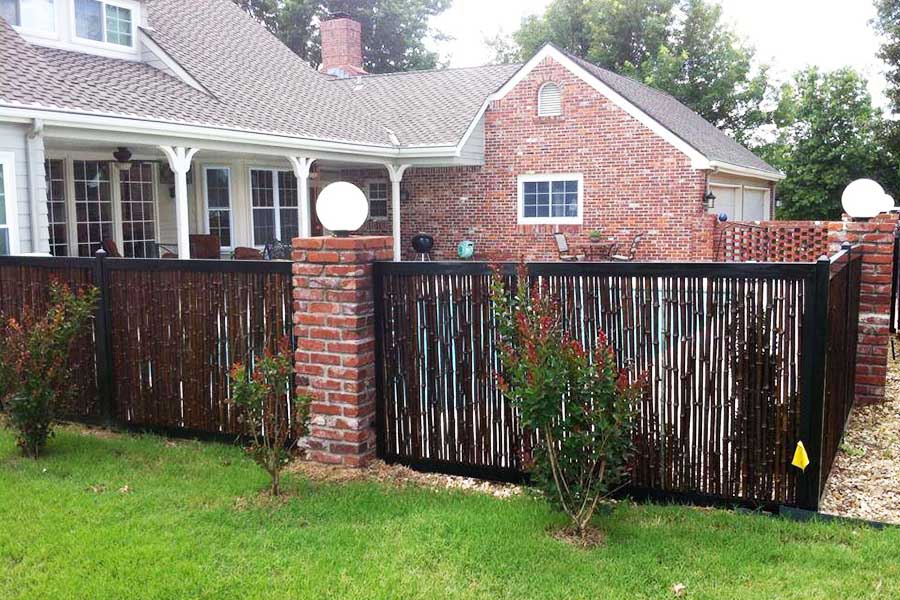All Categories
Featured

As sustainability ends up being a priority for organizations and home owners alike, the demand for eco-friendly products, consisting of fence materials, has climbed. Typical fence alternatives such as plastic, steel, and wood can have adverse environmental impacts, but there are now several eco-conscious options to think about. Picking green fencing materials not only assists reduce your carbon footprint yet likewise adds to a more all-natural and sustainable atmosphere.
- Bamboo Fence. Bamboo is one of the most environment-friendly secure fencing options readily available. Unlike typical woods, bamboo can be harvested in a few years and grows back swiftly, making it a sustainable choice for secure fencing.
Benefits: Bamboo is fast-growing, lightweight, and lasting. It calls for less plant foods and chemicals compared to other plants, making it a low-maintenance choice. Considerations: While bamboo is durable, it may need routine upkeep to safeguard it from weathering and natural wear. It can also be at risk to fracturing in colder climates. 2. Recycled Products. Fences made from recycled materials are ending up being increasingly preferred as a green option. These fences are made from post-consumer plastic, reclaimed timber, and various other recycled products, keeping waste out of garbage dumps. Making use of recycled materials lowers the need for new raw sources, reducing ecological destruction.

Perks: These fencings help in reducing waste and preserve all-natural resources. They are likewise commonly low-maintenance and long-lasting. Factors to consider: While recycled fences can be resilient, the appearances may not always match standard fencing choices. Nonetheless, numerous layouts are now available that resemble the look of wood or stone. 3. Compound Fencing. Compound fencing is made from a mixture of recycled wood fibers and plastic, supplying the appearance of timber without the environmental impact. Many composite fences are made from recycled material, further improving their eco-friendly standing. These fences are long-lasting, require very little maintenance, and do not require to be treated with harmful chemicals like typical timber fences.
Perks: Compound fencings are durable, immune to rot, and need little upkeep. They likewise offer a comparable visual to wood without logging worries. Factors to consider: While they are low-maintenance, composite fencings may be more expensive than traditional timber or vinyl options. The manufacturing procedure can also be energy-intensive. 4. Cedar and Redwood Fence. Cedar and redwood are natural timber materials that are commonly considered extra green contrasted to various other hardwoods. These kinds of timber are naturally resistant to decay, bugs, and wetness, which minimizes the need for chemical therapies. In addition, these trees are expanded in sustainable woodlands, making sure that they are harvested properly.
Conveniences: Cedar and redwood are both normally beautiful and sturdy materials. They supply all-natural resistance to bugs and rot, which helps in reducing the requirement for chemical therapies. Considerations: These timbers can be much more expensive than various other choices. They additionally call for occasional upkeep, such as tarnishing or securing, to make sure long life. 5. Living Fencings (Hedges and Hedges) Living fencings, made from bushes, trees, or bushes, are an environmentally friendly option that additionally provides all-natural personal privacy and aesthetic appeal. Plants such as privet, boxwood, bamboo, and arborvitae are typically made use of for developing dense, green fences. These living barriers assist with sound reduction, boost air top quality, and provide habitat for regional wild animals.
Benefits: Living fencings promote biodiversity, boost air high quality, and enhance the aesthetic appeal of your property. They also absorb co2 and add to a greener environment. Factors to consider: Living fences need upkeep, such as pruning and watering, to ensure they expand appropriately. They might not offer the exact same level of security as conventional fence products. 6. Rock and Reclaimed Block Fencing. Rock and reclaimed brick fencings are another green alternative. These materials are resilient, require minimal maintenance, and have a long life expectancy. When recovered from old buildings or structures, they help lower the requirement for brand-new products and protect against waste from entering garbage dumps.
Advantages: Rock and brick are durable, weather-resistant, and offer an ageless, classic aesthetic. Recovered materials also have a marginal ecological impact. Factors to consider: The setup of rock and brick fencings can be labor-intensive, and the materials might be much more expensive than other choices. The long-term longevity and reduced maintenance prices can make them a rewarding financial investment. Verdict. Choosing an environment-friendly fence material is a wise means to lower your ecological effect while improving your home's privacy and aesthetic charm. Bamboo, recycled products, composite fencing, and living fencings all offer lasting alternatives that decrease waste, preserve sources, and advertise a greener lifestyle.
By picking one of these environmentally friendly secure fencing alternatives, you add to the security of the atmosphere while creating a lovely, useful exterior room. The appropriate material will certainly depend on your preferences, climate, and the level of upkeep you agree to offer, yet remainder assured that there are numerous eco-conscious selections that align with your lasting lifestyle.
Latest Posts
Improve Your Home with Overhead Door Solution
Published May 23, 25
1 min read
Understanding Roof Covering Guarantees: What Homeowners Ought To Know
Published May 22, 25
1 min read
How Consistent Auto Maintenance at Montclare Auto Repair Saves You Money
Published May 22, 25
1 min read
More
Latest Posts
Improve Your Home with Overhead Door Solution
Published May 23, 25
1 min read
Understanding Roof Covering Guarantees: What Homeowners Ought To Know
Published May 22, 25
1 min read
How Consistent Auto Maintenance at Montclare Auto Repair Saves You Money
Published May 22, 25
1 min read